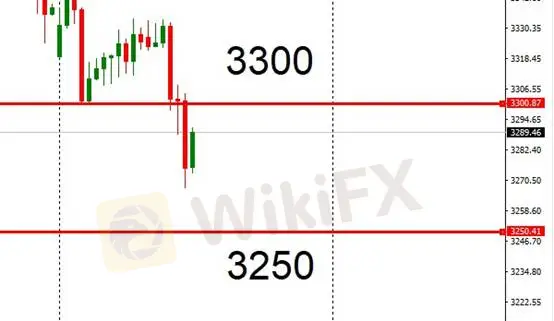简体中文
繁體中文
English
Pусский
日本語
ภาษาไทย
Tiếng Việt
Bahasa Indonesia
Español
हिन्दी
Filippiiniläinen
Français
Deutsch
Português
Türkçe
한국어
العربية
Federal Reserve Keeps Rates Unchanged, Further Pressures Gold Prices
Zusammenfassung:The Federal Open Market Committee (FOMC), after a two-day meeting, voted 9–2 to keep interest rates unchanged. The federal funds rate will remain in the 4.25%–4.5% range, marking the fifth consecutive
The Federal Open Market Committee (FOMC), after a two-day meeting, voted 9–2 to keep interest rates unchanged. The federal funds rate will remain in the 4.25%–4.5% range, marking the fifth consecutive meeting without a change.
In its statement, the Fed noted that U.S. economic growth slowed in the first half of the year, though the labor market remains resilient and inflation is still elevated—prompting policymakers to remain cautious. The statement also confirmed that the overnight reverse repo rate, the interest rate on reserve balances, and the discount rate remain at 4.25%, 4.40%, and 4.50%, respectively. However, two governors—Christopher Waller and Michelle Bowman—dissented, opposing the decision to hold rates steady.
According to official data, the U.S. economy grew at an annualized rate of 3% in Q2, a sharp rebound from a 0.5% contraction in Q1. However, Fed Chair Jerome Powell pointed out that this jump was largely driven by a decline in imports (related to trade tariffs) and that underlying economic momentum is slowing. The average growth in the first half was only 1.2%, below last years 2.5%.
Powell emphasized that any potential rate cuts this fall will depend on the full set of incoming data. Inflation remains above target, and the Fed aims to ensure that tariff-driven short-term price increases do not become a long-term problem.
![<b>[Chart 1: U.S. – Benchmark Interest Rate]</b>](https://wzimg.ruiyin999.cn/guoji2025-07-31/638895538378851395/ART638895538378851395_871315.png-article598)
[Chart 1: U.S. – Benchmark Interest Rate]
The Feds statement acknowledging slower economic growth initially strengthened market expectations for a rate cut, boosting U.S. equities and Treasuries. However, Powell refrained from offering clear guidance on a September rate cut during the press conference, stressing inflation risks and robust employment. This dampened expectations for rate cuts this year, causing the U.S. dollar and Treasury yields to spike.
According to the latest ADP National Employment Report, U.S. private sector employment in July grew more than expected. While some signs of labor market softness persist, the Department of Commerce also reported that Q2 GDP grew 3%, surpassing analysts‘ expectations of 2.4%. Both the surprisingly strong GDP and labor market data support the Fed’s decision to maintain a “wait-and-see” stance on rate cuts.
Gold Technical Analysis

From the one-hour chart, gold prices, after oscillating between the 3,350–3,300 range for two days, have now broken lower into the 3,300–3,250 range. Prices may next test support at 3,250. Traders should closely monitor this level to assess the likelihood of further downside. If gold holds this support, it could offer a long entry opportunity, employing a strategy of buying low and selling high within the range.
Resistance: $3,300/oz
Support: $3,250/oz
Risk Disclaimer: The above views, analysis, research, prices, or other information are provided solely as general market commentary and do not represent the position of this platform. All viewers assume their own risk. Please exercise caution.
Haftungsausschluss:
Die Ansichten in diesem Artikel stellen nur die persönlichen Ansichten des Autors dar und stellen keine Anlageberatung der Plattform dar. Diese Plattform übernimmt keine Garantie für die Richtigkeit, Vollständigkeit und Aktualität der Artikelinformationen und haftet auch nicht für Verluste, die durch die Nutzung oder das Vertrauen der Artikelinformationen verursacht werden.
WikiFX-Broker
Wechselkursberechnung


